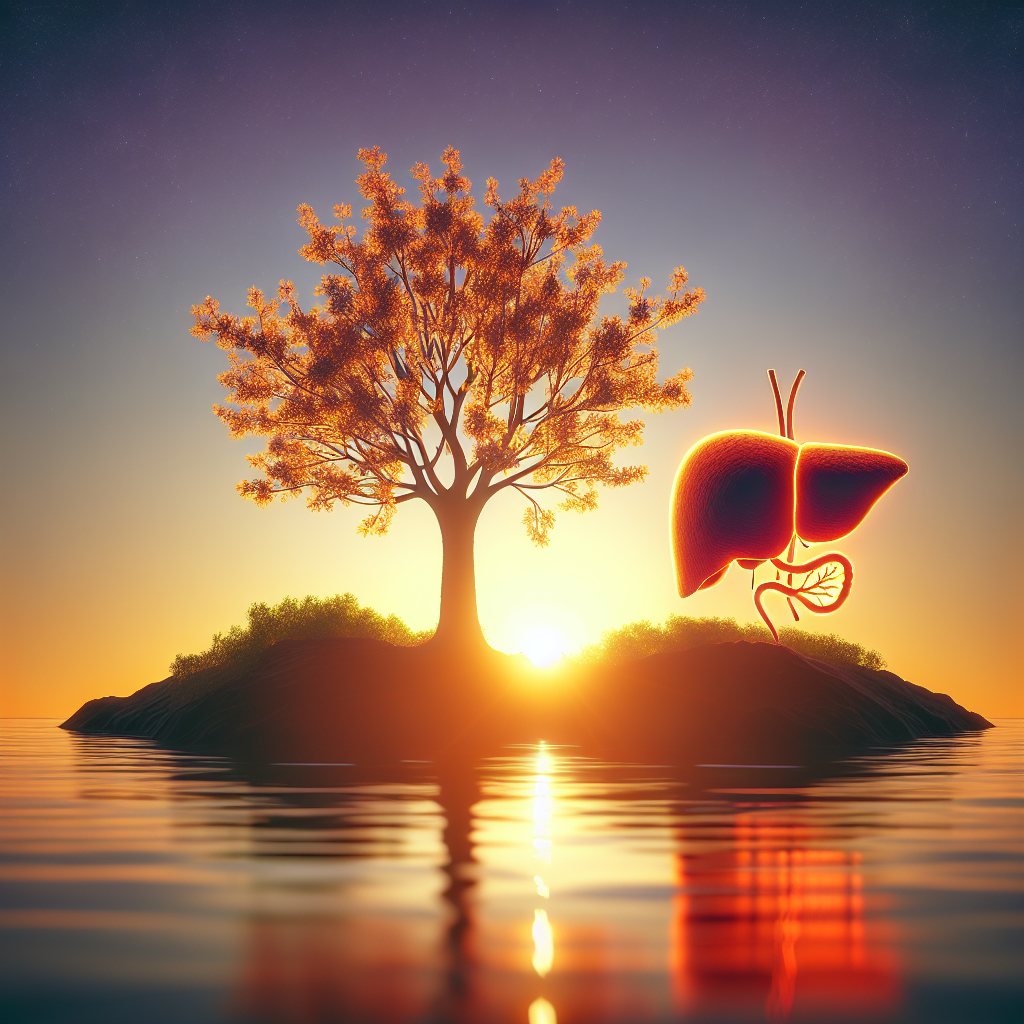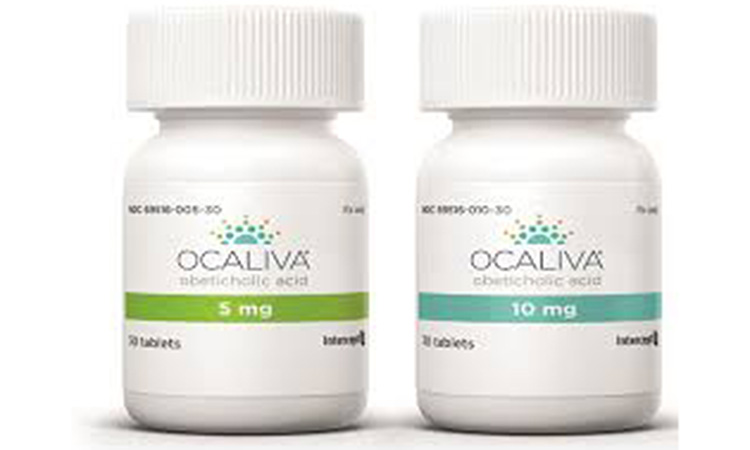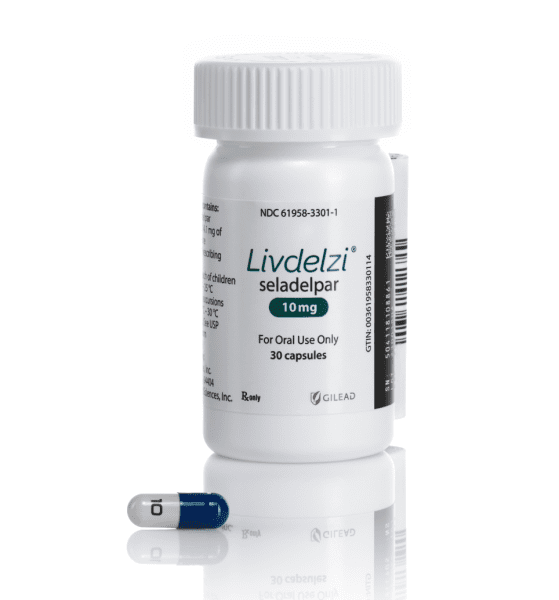New Primary biliary cholangitis (PBC) treatments 2024
New Primary biliary cholangitis (PBC) Treatments 2024
Primary biliary cholangitis (PBC) is a chronic liver disease characterized by the progressive destruction of the bile ducts within the liver. This destruction leads to a buildup of bile, which can cause liver inflammation and scarring over time, potentially leading to cirrhosis and liver failure. The exact cause of PBC is not fully understood, but it is thought to be an autoimmune condition, where the body's immune system mistakenly attacks its own cells. PBC is more common in women than men and is often diagnosed in individuals between the ages of 30 and 60. Symptoms of PBC can include fatigue, itching (pruritus), dry eyes and mouth, and jaundice, although some people may be asymptomatic in the early stages of the disease.
When considering treatment options for PBC, the primary goals are to slow the progression of the disease, alleviate symptoms, and prevent complications. Ursodeoxycholic acid (UDCA) is the first-line treatment for PBC and has been shown to improve liver function tests and prolong survival without liver transplantation. For patients who do not respond adequately to UDCA, obeticholic acid (OCA) may be prescribed as a second-line therapy. In addition to these medications, symptom management is important, and medications such as cholestyramine can be used to relieve itching. It is essential for patients to work closely with their healthcare provider to monitor their condition and adjust treatment as necessary, as well as to discuss the potential benefits and risks associated with each medication.

Treatment options
| Treatment option | Estimated cost | Efficacy | Eligibility |
|---|---|---|---|
| Ursodeoxycholic acid (UDCA) | $30 - $200 | First-line treatment, shown to improve liver biochemistries and slow disease progression. | Most patients with PBC |
| Ocaliva (obeticholic acid) | $3,600 - $4,600 | Second-line treatment, for use in combination with UDCA in adults unresponsive to UDCA alone. | Adults with an inadequate response to UDCA |
| Fibrates (Off-label use) | $10 - $100 | Some studies suggest potential benefit in combination with UDCA, but more research is needed. | Patients not responding adequately to first-line treatment |
| Liver Transplant | $100,000 - $575,000 | Most effective treatment for those with liver failure, with high survival rates post-transplant. | Patients with advanced PBC leading to liver failure |
| Experimental treatments (e.g., NGM282) | Cost not established | Still under investigation in clinical trials, efficacy not yet fully established. | Patients eligible for clinical trials |
Treatments options in detail
Ursodeoxycholic Acid (UDCA)
Ursodeoxycholic Acid (UDCA), also known as ursodiol, is the first-line treatment for Primary Biliary Cholangitis (PBC). UDCA works by reducing the concentration of toxic bile acids in the liver, which in turn decreases liver inflammation and fibrosis. The typical dose of UDCA for PBC is 13-15 mg/kg/day, and it is generally well-tolerated by patients. The effectiveness of UDCA is monitored through the improvement of liver function tests, and it has been shown to slow disease progression, improve symptoms, and prolong survival.
Obeticholic Acid (Ocaliva)
Obeticholic Acid (OCA), marketed as Ocaliva, is a second-line treatment for PBC in patients who do not respond adequately to UDCA or who are unable to tolerate it. OCA is a farnesoid X receptor (FXR) agonist that further reduces bile acid production and improves liver function. It was approved by the FDA for PBC treatment in combination with UDCA or as a monotherapy in patients who cannot tolerate UDCA. The starting dose is typically 5 mg once weekly, which may be increased based on patient response and tolerability. Side effects can include pruritus (itching) and an increase in low-density lipoprotein (LDL) cholesterol levels, which may require management with statins or other lipid-lowering agents.
Fibrates
Fibrates, such as fenofibrate, have been used off-label for the treatment of PBC, particularly in patients who have an incomplete response to UDCA. Fibrates are peroxisome proliferator-activated receptor (PPAR) agonists that can improve biochemical markers of liver function in PBC. While not approved by the FDA specifically for PBC, clinical studies have shown that fibrates can be beneficial in combination with UDCA for some patients. The use of fibrates requires careful monitoring for potential side effects, including alterations in liver enzymes and lipid profiles.
Liver Transplantation
For patients with advanced PBC who develop liver failure or complications such as variceal bleeding, ascites, or hepatic encephalopathy, liver transplantation may be the only curative option. Liver transplantation has a high success rate in PBC patients, with good long-term survival. However, PBC can recur in the transplanted liver, and lifelong immunosuppression is required to prevent organ rejection.
Bile Acid Sequestrants
Bile acid sequestrants such as cholestyramine are primarily used to treat pruritus associated with PBC. They bind bile acids in the intestine, preventing their reabsorption and reducing their levels in the bloodstream. Although not directly treating the liver disease, bile acid sequestrants can significantly improve the quality of life for patients with PBC who suffer from itching. These agents are not absorbed into the bloodstream, which minimizes systemic side effects, but they can interfere with the absorption of other medications and vitamins.
Antihistamines and Rifampicin
Antihistamines are sometimes used to alleviate pruritus in PBC, although their effectiveness can be limited. Rifampicin, an antibiotic with anti-pruritic properties, has also been used off-label for the treatment of severe pruritus in PBC. However, its use is limited by potential side effects, including hepatotoxicity and the development of drug resistance, and it should be prescribed with caution.
Experimental Treatments
Experimental treatments for PBC are being investigated in clinical trials and include a variety of novel agents. These may involve targeting different pathways implicated in the pathogenesis of PBC, such as immune modulation, anti-fibrotic agents, and other bile acid-related therapies. One example is the use of monoclonal antibodies that target specific immune cells or inflammatory mediators. Another area of research is the use of regenerative medicine techniques, such as stem cell therapy, to repair damaged liver tissue. However, these experimental treatments are not yet approved by the FDA and are available only to patients who participate in clinical trials.
Supportive Care and Lifestyle Changes
Supportive care is an essential aspect of managing PBC. This includes the treatment of symptoms and complications, nutritional support, and the management of associated conditions such as osteoporosis. Vitamin supplementation, particularly fat-soluble vitamins (A, D, E, and K), may be necessary due to malabsorption. Patients are also advised to avoid alcohol and smoking, maintain a healthy weight, and engage in regular physical activity to support overall liver health and reduce the risk of complications.
Conclusion
The treatment of Primary Biliary Cholangitis involves a combination of medication, lifestyle changes, and, in severe cases, liver transplantation. UDCA remains the cornerstone of therapy, with Ocaliva being an important option for those with an inadequate response to UDCA. Off-label use of fibrates and other agents may provide additional benefits for certain patients. Supportive care is crucial for managing symptoms and improving the quality of life. Ongoing research into experimental treatments offers hope for future advances in the management of PBC.
Symptoms
Common Symptoms of Primary Biliary Cholangitis (PBC)
Primary biliary cholangitis (PBC) is a chronic disease that affects the liver. The most common symptom experienced by individuals with PBC is fatigue, which can be pervasive and significantly impair daily activities. Another frequent symptom is pruritus, or itching, which often occurs without a visible rash and can be particularly severe, disrupting sleep and quality of life.
As the disease progresses, patients may develop jaundice, which is the yellowing of the skin and the whites of the eyes. This occurs due to the accumulation of bilirubin in the blood, a substance normally processed by the liver. Dry eyes and mouth are also common and are part of a condition known as sicca syndrome, which can be associated with PBC.
Some individuals may experience right upper quadrant abdominal pain, which is discomfort or pain in the area below the ribs on the right side. Additionally, hyperpigmentation or darkening of the skin can occur in PBC, often presenting in areas exposed to the sun or in creases of the body.
Less Common Symptoms of Primary Biliary Cholangitis (PBC)
While less common, some individuals with PBC may experience symptoms related to the body's inability to absorb fats properly due to the liver's compromised function. This can lead to steatorrhea, which is the excretion of abnormal quantities of fat with the feces, resulting in pale and foul-smelling stool. Vitamin deficiencies, particularly of the fat-soluble vitamins A, D, E, and K, can occur as a result of steatorrhea.
Individuals may also develop xanthomas, which are fatty deposits under the skin, typically around the eyes or on the extremities. In addition, some patients may experience symptoms of metabolic bone disease, such as bone pain or fractures, due to vitamin D deficiency and subsequent calcium malabsorption.
Another less common symptom is hepatomegaly, or enlargement of the liver, which can be detected during a physical examination. Splenomegaly, or enlargement of the spleen, can also occur and is often associated with hypersplenism, which can lead to a reduction in circulating blood cells and platelets.
Symptoms Indicative of Advanced Primary Biliary Cholangitis (PBC)
In advanced stages of PBC, complications may arise that lead to additional symptoms. Ascites, the accumulation of fluid in the abdomen, can cause abdominal distension and discomfort. Variceal bleeding, which is bleeding from dilated veins in the esophagus or stomach, can present as vomiting blood or passing black, tarry stools.
Hepatic encephalopathy, a decline in brain function due to severe liver disease, can cause symptoms such as confusion, memory problems, and changes in personality or mood. Muscle wasting and weight loss are also possible in advanced PBC, reflecting the body's struggle to maintain proper nutrition and metabolism.
Portal hypertension, an increase in blood pressure within the portal venous system, can lead to a range of symptoms, including splenomegaly, variceal bleeding, and ascites mentioned earlier. Finally, individuals with advanced PBC may experience symptoms of liver failure, such as coagulopathy (a disorder affecting blood clotting), jaundice, and a buildup of toxins in the blood, leading to hepatic encephalopathy.
Extrahepatic Manifestations of Primary Biliary Cholangitis (PBC)
Primary biliary cholangitis can also have extrahepatic manifestations, which are symptoms or conditions that occur outside of the liver. These can include thyroid disorders, such as hypothyroidism, which can cause symptoms like fatigue, weight gain, and cold intolerance.
Rheumatologic conditions, such as Sjögren's syndrome, rheumatoid arthritis, and systemic sclerosis, may also be associated with PBC. Sjögren's syndrome, in particular, can contribute to the dry eyes and mouth symptoms that are common in PBC patients.
Some individuals with PBC may develop Raynaud's phenomenon, which is characterized by a color change in the fingers and toes in response to cold temperatures or stress. Additionally, there may be an increased risk of developing urinary tract infections and osteoporosis, the latter of which can lead to an increased risk of fractures.
It is also important to note that many individuals with PBC may remain asymptomatic for years, and the disease is often discovered incidentally through abnormal liver function tests during routine blood work or investigation for another condition.
The symptoms of PBC can vary widely from person to person, and not all individuals will experience all symptoms. The progression of symptoms can also be quite variable, with some individuals experiencing a rapid progression and others having a slow, indolent course. Regular monitoring and management by healthcare professionals are crucial in managing the symptoms of PBC and slowing the progression of the disease.
Cure
Understanding the Cure for Primary Biliary Cholangitis (PBC)
Currently, there is no definitive cure for Primary Biliary Cholangitis (PBC), which is a chronic and progressive liver disease. The condition is characterized by the destruction of the bile ducts within the liver, leading to bile accumulation, liver inflammation, and eventually cirrhosis. Despite the lack of a cure, there are treatments available that can help manage symptoms and slow the progression of the disease.
Medications Used in the Management of PBC
The first-line treatment for PBC is ursodeoxycholic acid (UDCA), also known as ursodiol. UDCA is a naturally occurring bile acid that can help move bile through the liver, potentially slowing the progression of liver damage. While not a cure, UDCA has been shown to improve liver biochemistries and can lead to a better prognosis for many patients with PBC.
Another medication that has been approved for the treatment of PBC in patients who do not respond adequately to UDCA is obeticholic acid (OCA). OCA is a farnesoid X receptor (FXR) agonist that can decrease liver inflammation and fibrosis. It is an important option for those with an inadequate response to UDCA or those who are unable to tolerate it.
Off-label use of certain medications has also been explored in PBC management. For example, fibric acid derivatives, such as fenofibrate, have been used in some patients with PBC, particularly those with elevated lipid levels. However, the efficacy and safety of such off-label treatments require further research and should be considered on a case-by-case basis.
Liver Transplantation in PBC
For individuals with advanced PBC who develop liver failure or complications of cirrhosis, liver transplantation may be considered. Liver transplantation can be life-saving and offers the chance for a significantly prolonged life. However, it is important to note that transplantation is a treatment and not a cure, as the underlying autoimmune process that caused PBC can recur in the transplanted liver.
Lifestyle Changes and Supportive Care
In addition to medication, patients with PBC are advised to make lifestyle changes that can help manage their symptoms and improve their quality of life. Such changes include maintaining a healthy weight, avoiding alcohol, and eating a balanced diet. Vitamin supplements, particularly fat-soluble vitamins (A, D, E, and K), may be necessary due to malabsorption issues related to bile deficiency. Regular monitoring and supportive care are crucial for managing complications such as osteoporosis and hyperlipidemia that may arise from PBC.
Research and Future Directions
Research into new treatments for PBC is ongoing, with clinical trials investigating various immunosuppressive agents, biologics, and other novel therapies. These investigational treatments aim to target the underlying autoimmune mechanisms of PBC or to protect the bile ducts from damage. While these treatments may offer hope for the future, it is essential to note that they are not yet established as cures for PBC.
Gene therapy and stem cell therapy are also areas of interest in the search for a PBC cure. These cutting-edge approaches have the potential to correct underlying genetic predispositions or to regenerate damaged liver tissue. However, these technologies are still in the experimental stages and are not currently available as treatment options for PBC.
Conclusion
In summary, while there is no cure for Primary Biliary Cholangitis, there are effective treatments available that can help manage the disease and improve patient outcomes. Ursodeoxycholic acid remains the cornerstone of PBC treatment, with obeticholic acid available for those who require additional therapy. Liver transplantation is a viable option for end-stage disease, although it is not a permanent cure. Ongoing research and clinical trials continue to explore new therapeutic avenues with the hope of finding a definitive cure for PBC in the future.
Access Primary biliary cholangitis (PBC) medicines today
If Primary biliary cholangitis (PBC) medicines are not approved or available in your country (e.g. due to supply issues), you can access them via Everyone.org.
How Everyone.org works

Make an enquiry
Choose the medicine you want to access, answer a couple of questions, and upload your prescription to speed things up. We’ll get back to you within 24 hours.


Make an enquiry
Choose the medicine you want to access, answer a couple of questions, and upload your prescription to speed things up. We’ll get back to you within 24 hours.


Breeze through the paperwork
We'll guide you through the required documents for importing unapproved medicine, ensuring you have all the necessary information.


Get a personalized quote
We’ll prepare a quote for you, including medicine costs and any shipping, administrative, or import fees that may apply.


Receive your medicine
Accept the quote and we’ll handle the rest - sourcing and safely delivering your medicine.

Some text on this page has been automatically generated. Speak to your physician before you start a new treatment or medication.
Let's talk
If you have any questions, call us or send us a message through WhatsApp or email:
Contact us




